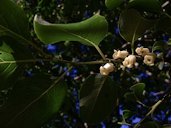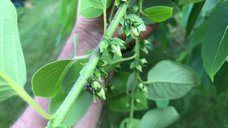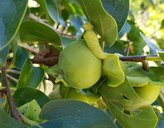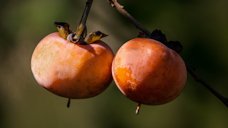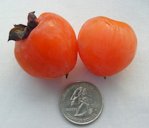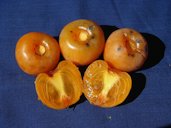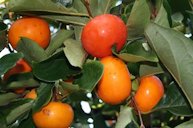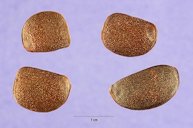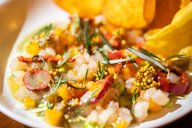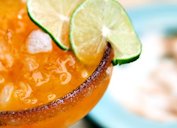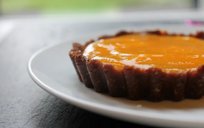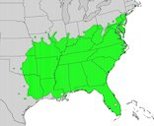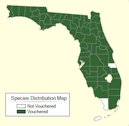| Persimmon American - Diospyros virginiana | |||||||||||||||||||||||||||||||||||||||||||||||
|---|---|---|---|---|---|---|---|---|---|---|---|---|---|---|---|---|---|---|---|---|---|---|---|---|---|---|---|---|---|---|---|---|---|---|---|---|---|---|---|---|---|---|---|---|---|---|---|
 Fig. 1  Diospyros virginiana American persimmon in Shebekino  Fig. 2  D. virginiana new growth  Fig. 3  Feuilles du plaqueminier de Virginie (D. virginiana) 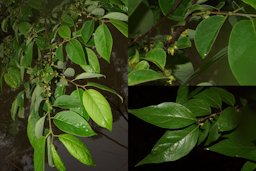 Fig. 4  Leaves and flowering habit, Maryland, US 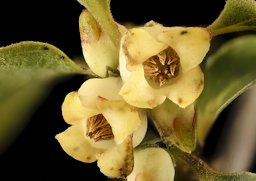 Fig. 11  The male flowers of the local persimmon tree (D. virginiana), USGS Bee Inventory and Monitoring Lab, Beltsville, Maryland, USA, 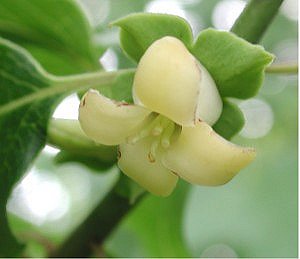 Fig. 12 Female flower  Fig. 13  American persimmon blossoms, Kinder Farm Park in Millersville, Maryland 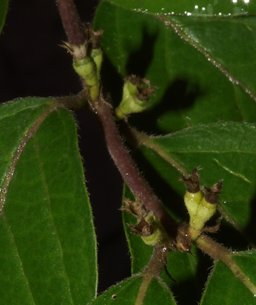 Fig. 14  Catholic Church Road, Big Pool, MD, USA 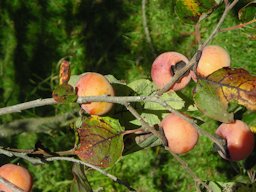 Fig. 17  'John Rick' D. virginiana persimmons, fruiting habit (unripe fruit) 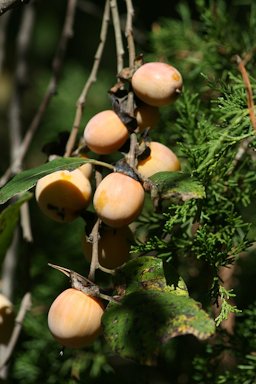 Fig. 18  Fruit of Common Persimmon (D. virginiana) in Bear Creek Lake State Park, Virginia, USA 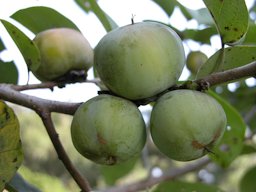 Fig. 19  American persimmons in Tampa, Florida  Fig. 20  American persimmons, Tampa, FL 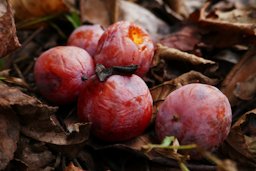 Fig. 21  American persimmon, Elgin, AL 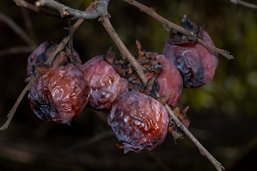 Fig. 22  American persimmon D. virginiana, Prince William County, VA, USA (ripe fruit) 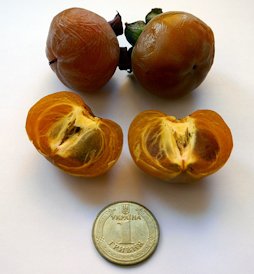 Fig. 23  Mature fruits of American persimmon (Diospyros virginiana) from plantations of Institute of Horticulture NAAS (Novosilky, Ukraine) 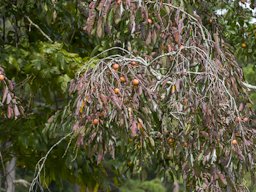 Fig. 30  D. virginiana, Croft State Park, SC, USA 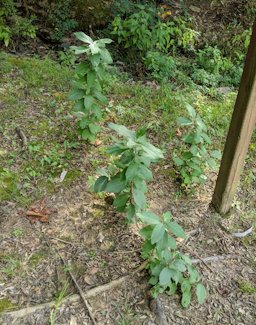 Fig. 31  American persimmon young seedlings, Faulkner County, AR, USA 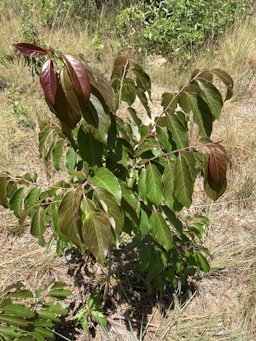 Fig. 32  American persimmon, Trenton, FL, US 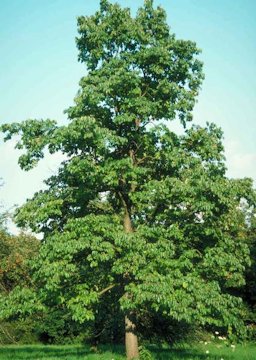 Fig. 33  Middle-aged D. virginiana, common persimmon 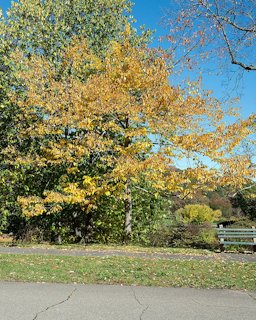 Fig. 34  D. virginiana (common persimmon), Boston, USA 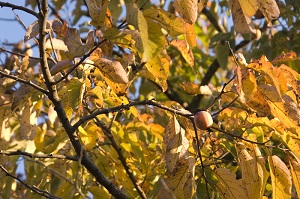 Fig. 35  An American persimmon, D. virginiana, tree bearing fruit in the fall.The color of the tree's leaves are yellow because of the decrease in chlorophyll. Cartenoids provide the colorations of yellow, brown, orange, that tint the leaves. 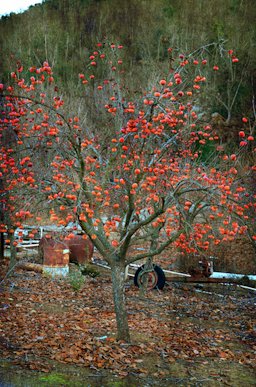 Fig. 36  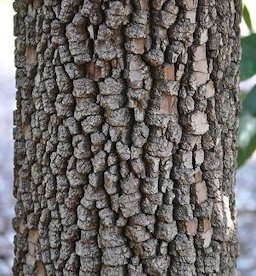 Fig. 37  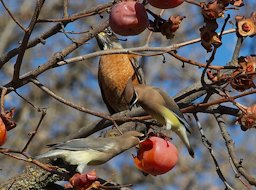 Fig. 38  Cedar Waxwings, Bombycilla cedrorum and American robin, Turdus migratorius on persimmon tree 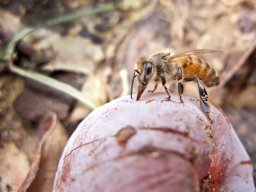 Fig. 39  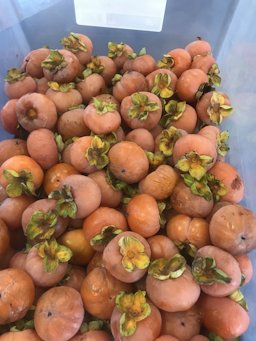 Fig. 40  American persimmon, St. Teresa's Academy, Kansas City 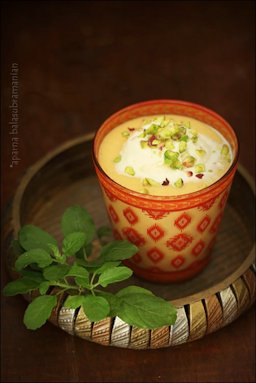 Fig. 41  Spiced persimmon milkshake with vanilla ice-cream |
Scientific
name Diospyros virginiana L Pronunciation dye-OSS-pih-ross ver-jin-nee-AY-nuh 3 Common names Eastern persimmon, possumwood, American ebony, white ebony, bara-bara, boa-wood, butterwood Synonyms D. mosieri Small, D. virginiana L. var. mosieri (Small) Sarg., D. virginiana L. var. platycarpa Sarg., D. virginiana L. var. pubescens (Pursh) Dippel, D. virginiana L. var. virginiana 7 Relatives Diospyros is a genus of over 550 species, the closest relatives being the black sapote (D dignia), mabolo, velvet apple (D. blancoi), Japanese persimmon (D. kaki), Texas persimmon (D. texana;), date plum (D. lotus) 9 Family Ebenaceae (ebony family) Origin Native to the southern two-thirds of the eastern United States 3 USDA hardiness zones 4b-10 10 Uses Fruit; reclamation; specimen; urban tolerant; highway median; bonsai 3 Height 40-60 ft (18-18 m) 3 Spread 20-35 ft (6-10.6 m) 3 Crown Crown irregular, oval, pyramidal 3 Plant habit The trunk typically ascends up through the crown in a curved but very dominant fashion, rarely producing double or multiple leaders 3 Growth rate Moderate Longevity 50-150 years Trunk/bark/branches Thick trunk; mature bark dark gray, thick and blocky; branches droop Pruning requirement Little required Leaves Deciduous; simple; alternate; glossy and leathery; 2-4 in. (5-10 cm) wide; 4-8 in. (10-20.3 cm) long Flowers Dioecious, require cross pollination Fruit Fruits only on female trees; round, 1-3 in. (2.5-7.6 cm); fleshy berry; orange; good fruit crops are borne every 2 years Season Sept. through Spring USDA Nutrient Content pdf Light requirement Partial shade to full sun Soil tolerances Clay; sand; loam; alkaline; acidic; extended flooding; well-drained 3 pH preference Highly acidic to slightly alkaline Drought tolerance High 3 Aerosol salt tolerance High 3 Cold tolerance 0 °F (-17 °C) Plant spacing 15ft (4.6m) Roots Coarsely-branched; long tap root that makes transplanting difficult Invasive potential * Native Pest resistance Sensitive to pests/diseases; susceptible to verticillium wilt Known hazard Fruit litter can be a problem; people who consume huge amounts of persimmons or who have gastric issues are at risk for intestinal blockage called a bezoar 5 Reading Material Diospyros virginiana: Common Persimmon, University of Florida pdf Diospyros virginiana, Floridata American Persimmon, University of Kentucky, Cooperative Extension pdf The American Persimmon, Fairchild Tropical Botanic Garden The Perfectly Pleasing Persimmon, Southern Illinois University Origin North America Distribution Common persimmon is found from southern Connecticut and Long Island to southern Florida; westward through central Pennsylvania, southern Ohio, southern Indiana, and central Illinois to southeast Iowa; and south through eastern Kansas and Oklahoma to the Valley of the Colorado River in Texas. 4 Common Persimmon, USDA Natural Resources Conservation Service pdf Description An excellent small to medium tree, common persimmon is an interesting, somewhat irregularly-shaped native tree, for possible naturalizing in yards or parks. It is well adapted to cities, but presents a problem with fruit litter, attracting flies and scavengers, such as opossums and other mammals. Its mature height can be 60 feet, with branches spreading from 20 to 35 feet and a trunk two feet thick, but it is commonly much shorter in landscapes. The trunk typically ascends up through the crown in a curved but very dominant fashion, rarely producing double or multiple leaders. Lateral branches are typically much smaller in diameter than the trunk. 2 Most of the persimmons trees you will see, especially in Florida, are only eight to ten feet tall, occasionally 15 to 20 feet. The Persimmon is usually the last tree to leaf out in the spring and the first to lose it leaves in the fall, a strategy to thwart predatory insects. 5 Bark (Fig. 37) Dark brown or dark gray, deeply divided into plates whose surface is scaly. Branchlets slender, zigzag, with thick pith or large pith cavity; at first light reddish brown and pubescent. They vary in color from light brown to ashy gray and finally become reddish brown, the bark somewhat broken by longitudinal fissures. Astringent and bitter. 8 Leaves Leaves are deciduous, simple, alternate, ovate to elliptic or oblong with smooth edges, 3.5-8 cm long, with an acuminate apex and rounded base, the lower surface usually lighter-colored, especially on young leaves. 2
Fig. 7. American persimmon D. virginiana, Corinth, TX, US Fig. 8,9. American persimmon, Trenton, FL, US Flowers Flowers are either male (staminate) or female (pistillate), borne on separate trees (the species dioecious) on shoots of the current year after leafing; pistillate flowers solitary (Fig. 12), sessile or short-stalked, bell-shaped, ca. 2 cm long, the corolla creamy to greenish-yellow, fragrant, usually with 4 thick, recurved lobes; staminate flowers in 2-3-flowered clusters (Fig. 16), tubular, 8-13 mm long, greenish-yellow. 2
Fig. 15. D. virginiana female flowers, C and O Canal National Historical Park, in Montgomery county Maryland, USA Fig. 16. Male flowers grow in 2-3 flowered clusters Fruit Mature fruit may be yellow, orange, bright red, or blue in color. Fruit becomes soft and mushy while ripening. It is popularly believed that a hard frost is required to sweeten the fruit, but actually persimmons just require a long period for ripening. Edible fruits often hang on the trees through fall, and even into winter, unaffected by freezing temperatures. 1 Its fruit is an edible berry that usually ripens after frost, although some cultivars do not require the frost treatment to ripen. Before ripening, however, the fruit is decidedly astringent and not edible. Most American cultivars require both male and female trees for proper fruiting. 3 Fruits can be thinned during the heavy years, to stimulate production in the lean years, by removing half or more of the developing fruit within a month after bloom. 11 Note: If your mouth puckers when sampling a fruit, it is not ripe! The transformation from the unripe, astringent to the ripe, delicious sugary fruit is truly amazing (Fig. 22) - the two forms of persimmon fruits are as different as day and night. So if someone told you they once tried persimmon and it was terrible, they probably sampled an unripe fruit. 9 Varieties The variety pubescens has fuzzy leaves and twigs. 3 Several cultivars are available with improved fruit size and quality. In native persimmon areas, top working or grafting on suckers is a good way to get superior cultivars into bearing quickly. 4 Varieties of the common persimmon are the fuzzy common persimmon (D. virginiana var. pubescens (Pursh) Dipp.); Oklahoma common persimmon (D. uirginiana var. platycarpa Sarg.); and Florida persimmon (D. uirginiana var. mosieri (Small) Sarg. Hybrids have been reported between D. uirginiana, D. kaki, and D. lotus. 4 The 'Meader" cultivar is self-pollinating and only grows to 12-15 ft. 'Meader' - The most commonly available cultivar, popular for its extreme hardiness and ability to fruit without a pollinator. Reaches 30'-40' tall and also serves as a good ornamental plant with handsome fall foliage. Developed at the University of New Hampshire. Other common fruiting varieties include 'John Rick', 'Early Golden', 'Garrettson', 'Prok', 'Meader' and 'Killen'.
Fig. 24. Caqui de Virgínia als Miralbons, Gata (immature fruit) Fig. 25. Wild persimmon, fall fruit, autumn fruit, persimmon tree, orange fruit, persimmon berry, diospyros virginiana Fig. 26. 'Meyer' seedless persimmon from Seymour, IN Fig. 27. 'Prok' D. virginiana persimmon cultivar Fig. 28. 'Hudson' persimmon Harvesting Persimmon trees propagated from seeds begin producing a crop in about 4 to 9 years, while grafted trees can begin fruiting 3 years after planting. It may take as many as 10 years for trees to come into full production. 1 Persimmons can be stored just above freezing for approximately 3 months. 1 Pollination Male and female flowers are usually borne on separate trees, but female flowers can self pollinate. 6
Propagation Persimmon can be propagated from seeds, cuttings, suckers, and grafts. Plants can be easily produced from seed after a 3-month period of seed stratification. Seedlings that are one to two years old may be transplanted to the orchard. To ensure high quality plants and fruit, however, it is best to plant grafted or budded trees. Persimmon has a long taproot that can make transplanting more difficult. 1
Pruning Persimmon trees, which are pruned to open center or modified central leader, require little pruning once they reach bearing size. 1 Pruning should be done during the winter to remove the height from the tree and to form the canopy. Because there are no leaves, it is easy to visualize your pruning work. 6 Culture The trees grow following the end of the dry season and usually flush only once. Their growth is slow; the home gardener has to have a degree of patience. 6 Fertilizing The trees should be heavily mulched and fertilizer should be applied once at the beginning of the rainy season with a granular formulation of 8-3-9. 6 Diseases Common persimmon is troubled by a leaf-spot disease that may limit its use in the South. This disease causes black spots on the leaves and premature defoliation, sometimes in August in the North, September in the South. It will not kill the tree but the litter from early defoliation may be objectionable. 3 It is also susceptible to a vascular wilt which can be devastating to established trees. 3 Maintenance Except for cleaning up the messy fruit if it falls on a patio or sidewalk, common persimmon maintenance is quite easy and it could be planted more. Locate it where the slimy fruit will not fall on sidewalks and cause people to slip and fall. 3 Food Uses The pulp can be used to make jelly, syrup, beer, wine, liquor, bread, pancakes, pudding, molasses, fruit leather, dried fruit. The pulp can also be frozen and eaten like ice cream. A peanut-like cooking oil can be squeeze from the seeds. 5 Dried fruit is added to baked goods and occasionally is fermented with hops, cornmeal, or wheat bran into a sort of beer. The dried, roasted, ground seeds have been used as a substitute for coffee. 4 Interestingly persimmons can be interchanged in any recipe with bananas, measure for measure, weight for weight. 5
Fig. 42. Kanapachi tartare: persimmon, Calabrian pepper, brussel sprouts, charred vegetable broth, yam chips Fig. 43. Persimmon margarita Fig. 44. Vegan gluten-free raw persimmon tart
Dried Persimmon Recipe, Just Fruits and Exotics nursery Medicinal Properties ** Another use for a persimmon tree is reportedly as a remedy for the itch of poison ivy. Remove a few twigs from a persimmon tree, cover with water, and boil for 20 minutes. Strain and cool the liquid. Several applications is said to dry the rash. 5 The inner bark and unripe fruit are sometimes used in treatment of fevers, diarrhea, and hemorrhage. 4 Other Uses Indelible ink is made from fruit. 4 The tree is suitable for erosion control on deeper soils because of its deep root system. 4 The wood is close grained, heavy, hard, and strong. The American persimmon is perfect for cultivating bromeliads and orchids, which root easily on the trunk and thrive with the ample winter light within the bare canopy. Because of its hardness, smoothness, and even texture, it was particularly desirable for wood turning and even making golf club heads. 6 Specific gravity, 0.7908; weight of cubic foot, 49.28 lb (22.35 kg). The heartwood is a true ebony. Forestry texts indicate that about a century of growth is required before a tree will produce a commercially viable yield of ebony wood. 8 Persimmon flowers are useful in the production of honey. 4 General The tree grows well in the South Florida landscape and excels with seasonal inundation, unlike most of our home garden fruit. The tree is small, less than 20 feet in height, and it sprouts profusely from the roots, forming a persimmon coppice over time. It is a slow-growing tree. The tree is admired for its picturesque form, zig-zag branching, beautiful foliage and colorful fruit. The glossy, leathery leaves make the persimmon tree a nice addition to the landscape. It is also one of the only trees we have in South Florida that can provide autumnal color to our landscapes. 6 The seeds were used as buttons by the Confederate Army during the American civil war. 5 The common name, persimmon, is the American Indian word for the fruit. 5 Virginiana is of Virginia but in botanical terms it always means North America. Persimmon is the Anglicized version of an Algonquin name that means “dry seed” or “dry fruit” referring to the high level of tannins in the unripe fruit. 5
Fig. 45. Range distribution map of D. virginiana Fig. 46. Common persimmon distribution map, wild populations Other Edibles in the Diospyros genus: Black sapote, D. digyna Japanese Persimmon, D. kaki Mabolo, D. blancoi Further Reading Persimmons, AgriLife Extension, Texas A&M System pdf Persimmon Provisions, Eat The Weeds Diospyros virginiana, Agroforestry Database Home Garden: Persimmons, University of Georgia Extension pdf Common Persimmon, USDA Northeastern Area State and Private Forestry pdf American Persimmon Botanical Art List of Growers and Vendors |
||||||||||||||||||||||||||||||||||||||||||||||
| Bibliography 1 Strang, John, and Wright, Shawn. "American Persimmon." University of Kentucky, College of Agriculture. Issued 2008. Revised 2011, extension.ca.uky.edu. Accessed 3 Feb. 2015. 2 Nesom, Guy. "Common Persimmon." Plants USDA, Formerly BONAP, North Carolina Botanical Garden, University of North Carolina, Chapel Hill, North Carolina. Edited 29 Nov. 2000, 10 June 2003, 6 June 2006, plants.usda.gov. Accessed 3 Feb. 2015. 3 Gilman, Edward F., and Dennis G. Watson. "Diospyros virginiana: Common Persimmon." Environmental Horticulture Dept., UF/IFAS, ENH390, Original Pub. Nov. 1993, Revised December 2018, Ask IFAS, edis.ifas.ufl.edu/ST231. Accessed 3 Feb. 2015, 28 Nov. 2021. 4 Halls, Lowell K. "Diospyros virginiana L., Common Persimmon." Silvics of North America, Hardwoods, Agric. Handb. 654, Washington, DC: U.S. Department of Agriculture: 294-298. Vol. 2, 1981, www.fs.usda.gov/treesearch/pubs/9525. Accessed 10 June 2016. 5 Deane, Green. "Persimmon Provisions." Eat the Weeds and other things, too. www.eattheweeds.com. Accessed 2 Feb. 2015. 6 Ledesma, Noris. "The American Persimmon." Fairchild Tropical Botanic Garden, 5 May. 2012, fairchildgarden.org. Accessed 7 Feb. 2015. 7 "Common persimmon, Diospyros virginiana L. synomyms." The PLANTS Database, National Plant Data Team, Greensboro, NC 27401-4901 USA, USDA, NRCS, plants.usda.gov/home/plantProfile?symbol=divi5. Accessed 2 May 2016. 8 "Diospyros virginiana." Wikipedia, wikipedia.org. Web 3 May 2016. 9 Nickrent, Dan. "The Perfectly Pleasing Persimmon." Southern Illinois University, plantbiology.siu.edu. Accessed 2 Feb. 2015. 10 Christman, Steve. "Diospyros virginiana." Floridata, no. 271, Published 26 Feb. 1998, Updated 14 Feb. 1999, 20 Feb. 2003, 4 Aug. 2004, floridata.com/plant/271. Accessed 28 Nov. 2021. 11 Orwa, C., et al. "Diospyros virginiana L." Agroforestree Database: a tree reference and selection guide, version 4.0, 2009, www.worldagroforestry.org/treedb2/speciesprofile.php?Spid=18174. Accessed 10 Nov. 2018. Video v1 "American Persimmon - Identifying Male and Female Flowers." EdibleAcres, 14 June 2021, (CC0), www.youtube.com/watch?v=ZoV5IGLrXY4. Accessed 28 Nov. 2021. v2 "American Persimmon Seed Stratification." The Common Milkweed, 19 Feb 2020, (CC0), www.youtube.com/watch?v=ZCs7IxxlUDA. Accessed 28 Nov. 2021. v3 "How to Process A Persimmons and Know When They are Ripe." The Common Milkweed, 13 Oct 2021, (CC0), www.youtube.com/watch?v=8tWRBg9xTZA. Accessed 28 Nov. 2021. Photographs Fig. 1 Лобачев Владимир. "American Persimmon in Shebekino." Wikimedia Commons, 2013, (CC BY-SA 3.0), commons.wikimedia.org. Accessed 3 Feb. 2015. Fig. 2 Denton, Shirley. "Diospyros virginiana." Atlas of Florida Plants, Institute for Systematic Botany, University of South Florida, Tampa, S. M. Landry and K. N. Campbell (application development), USF Water Institute, 2021, Atlas of Florida Plants, florida.plantatlas.usf.edu/photo.aspx?ID=722. Accessed 28 Nov. 2021. Fig. 3 Grandmont, Jean-Pol. "Feuilles du plaqueminier de Virginie (Diospyros virginiana)." Wikimedia Commons, 2007, commons.wikimedia.org. Accessed 3 Feb. 2015. Fig. 4,14 Harms, Bill. "American Persimmon Diospyros virginiana, Catholic Church Road, Big Pool, MD, USA." iNaturalist, Research Grade, 17 Nov. 2021, (CC BY 4.0), www.inaturalist.org/observations/101308596. Accessed 27 Nov. 2021. Fig. 5 Tyler, Deb. "American Persimmon Diospyros virginiana, Missouri, US." iNaturalist, Research Grade, Oct. 2021, (CC BY 4.0), Image cropped, www.inaturalist.org/observations/97716126. Accessed 27 Nov. 2021. Fig. 6 Mohlenbrock, Robert H. "Common persimmon, Diospyros virginiana L. leaf." USDA, NRCS, The PLANTS Database National Plant Data Team, Greensboro, NC 27401-4901 USA, plants.usda.gov. Accessed 2 May 2016. Fig. 7 Travis, Lisa. "American Persimmon Diospyros virginiana, Corinth, TX, US." iNaturalist, Research Grade, 20 Nov. 2021, (CC BY 4.0), www.inaturalist.org/observations/101558269. Accessed 27 Nov. 2021. Fig. 8,9,32 meflowers900. "American Persimmon Diospyros virginiana, Trenton, FL, US ." iNaturalist, Research Grade, 1 May 2021, (CC BY 4.0), www.inaturalist.org/observations/76210705. Accessed 28 Nov. 2021. Fig. 10 Diospyros virginiana (Common Persimmon)." Plant Image Library, Boston, USA, 7 Nov. 2017, Wikimedia Commons, via Flikcr, (CC BY-SA 2.0), commons.wikimedia.org/wiki/File:Diospyros_virginiana_(Common_Persimmon)_(37535351434).jpg. Accessed 27 Nov. 2021. Fig. 11 Metzman, Helen Lowe. "The male flowers of the local persimmon tree (Diospyros virginiana)." USGS Bee Inventory and Monitoring Lab, Beltsville, Maryland, USA, 23 Dec. 2017, Wikimedia Commons, via Flickr, Public Domain, commons.wikimedia.org/wiki/File:Diospyros_virginiana,_Persimmon_staminate_flower,_Howard_County,_MD,_Helen_Lowe_Metmzn_2017-06-17-14.19_ (25526468778).jpg. Accessed 27 Nov. 2021. Fig. 12 Pollinator. "American Persimmon Flower." Wikimedia Commons, 2004, (CC BY-SA 3.0), (GFDL), commons.wikimedia.org. Accessed 3 Feb. 2015. Fig. 13 Beziat, Matthew. "American Persimmon Blossoms, Kinder Farm Park in Millersville, Maryland." Flickr, 28 May 2018, (CC BY 2.0), www.flickr.com/photos/109690096@N08/41517850035/in/photolist. Accessed 28 Nov. 2021. Fig. 15 Fritzflohrreynolds. "Diospyros virginiana in flower. This is a native plant growing wild in the C & O Canal National Historical Park, in Montgomery county Maryland, USA." Wikimedia Commons, 4 June 2013, (CC BY-SA 3.0), commons.wikimedia.org/Diospyros_virginiana_-_American_Persimmon_3.jpg. Accessed 3 Feb. 2015. Fig. 16 "American Persimmon - Identifying Male and Female Flowers." EdibleAcres, 14 June 2021, (CC0), www.youtube.com/watch?v=ZoV5IGLrXY4. Accessed 28 Nov. 2021. Fig. 17 bruce_crossing. "John Rick D. virginiana persimmons." Wikimedia Commons, via Flikcr, 2 Oct. 2008, (CC BY-SA 2.0), commons.wikimedia.org/wiki/File:John_Rick_persimmons_(7174210308).jpg. Accessed 27 Nov. 2021. Fig. 18 vastateparksstaff. "Fruit of Common Persimmon (Diospyros virginiana) in Bear Creek Lake State Park, Virginia, USA." Wikimedia Commons, via Flickr, 16 Oct. 2010, (CC BY 2.0), commons.wikimedia.org/wiki/File:Common_Persimmon_in_Bear_Creek_Lake_State_Park_(5091711144).jpg. Accessed 28 Nov. 2021. Fig. 19 Ghosh, Asit K. Thaumaturgist. "American Persimmons (Diospyros virginiana/Ebenaceae) in Tampa, Florida" Wikimedia Commons, 21 Aug. 2005, (CC BY-SA 3.0), commons.wikimedia.org/wiki/File:Persimmon_American2_Asit.jpg. Accessed 28 Nov. 2021. Fig. 20 Ghosh, Asit K. Thaumaturgist. "American Persimmons (Diospyros virginiana/Ebenaceae), Tampa, Florida." Wikimedia Commons, 2005, commons.wikimedia.org. Accessed 3 Feb. 2015. Fig. 21 cerg10. "American Persimmon Diospyros virginiana, Elgin, AL 35652, USA." iNaturalist, Research Grade, 25 Oct. 2021, (CC BY 4.0), www.inaturalist.org/observations/99316345. Accessed 27 Nov. 2021. Fig. 22 Smith, Ben. "American Persimmon Diospyros virginiana, Prince William County, VA, USA." iNaturalist, Research Grade, 25 Nov. 2021, (CC BY 4.0), www.inaturalist.org/observations/101920697. Accessed 27 Nov. 2021. Fig. 23 Yaroslav, Ivanovych. "Mature fruits of American Persimmon (Diospyros virginiana) from plantations of Institute of Horticulture NAAS (Novosilky, Ukraine)." Wikimedia Commons, 31 Oct. 2015, (CC BY-SA 4.0), commons.wikimedia.org/wiki/File:Плоди_хурми_віргінської_(Diospyros_virginiana)_в_розрізі.jpg. Accessed 27 Nov. 2021. Fig. 24 Joanbanjo. "Caqui de Virgínia als Miralbons, Gata." Wikimedia Commons, 15 June 2019, (CC BY-SA 4.0), commons.wikimedia.org/wiki/File:Caqui_de_Virgínia_als_Miralbons,_Gata.jpg. Accessed 28 Nov. 2021. Fig. 25 "Wild persimmon, fall fruit, autumn fruit, persimmon tree, orange fruit, persimmon berry, Diospyros virginiana." Hippopx, (CC0), www.hippopx.com/en/wild-persimmon-fall-fruit-autumn-fruit-persimmon-tree-orange-fruit-persimmon-berry-diospyros-virginiana-73960. Accessed 30 Nov. 2021. Fig. 26 Bruce_crossing. "Meyer seedless persimmon from Seymour, IN." Flickr, 2008, (CC BY-SA 2.0), www.flickr.com. Accessed 4 Feb. 2015. Fig. 27 Bruce_crossing. "'Prok' D. virginiana persimmon cultivar." Flickr, 2008, (CC BY-SA 2.0), www.flickr.com. Accessed 4 Feb. 2015. Fig. 28 Ledesma, Noris. "'Hudson' Persimmon." Fairchild Tropical Botanic Garden, 2012, fairchildgarden.org. Accessed 3 May 2016. Fig. 29 Hurst, Steve. "Common persimmon, Diospyros virginiana L. seeds." USDA, NRCS, The PLANTS Database National Plant Data Team, Greensboro, NC 27401-4901 USA, plants.usda.gov. Accessed 2May 2016. Fig. 30 Harpootlian, Phillip. "American Persimmon Diospyros virginiana, Croft State Park, SC, USA." iNaturalist, Research Grade, 3 Oct. 2021, (CC BY 4.0), www.inaturalist.org/observations/ 97018066. Accessed 27 Nov. 2021. Fig. 31 Hammond, Matthew. "American Persimmon Diospyros virginiana, Faulkner County, AR, USA." iNaturalist, Research Grade, 12 Oct. 2021, (CC BY 4.0), www.inaturalist.org/observations/98012472. Accessed 27 Nov. 2021. Fig. 33 Gilman, Ed. "Middle-aged Diospyros virginiana: common persimmon." Landscape Plants, UF/IFAS Extension, edis.ifas.ufl.edu. Accessed 3 Jan. 2015. Fig. 34 Diospyros virginiana (Common Persimmon)." Plant Image Library, Boston, USA, 7 Nov. 2017, Wikimedia Commons, via Flikcr, (CC BY-SA 2.0), commons.wikimedia.org/wiki/File:Diospyros_virginiana_(Common_Persimmon)_(38246396151).jpg. Accessed 27 Nov. 2021 Fig. 35 GPhoto. "An American Persimmon Diospyros virginiana tree bearing fruit in the fall." Wikimedia Commons, 2006, commons.wikimedia.org. Accessed 3 Feb. 2015. Fig. 36 Tate Soberon, Sharon. "Persimmon tree." Flickr, 28 May 2018, (CC BY 2.0), www.flickr.com/photos/4thglryofgod/8373992637/in/photolist. Accessed 28 Nov. 2021. Fig. 37 SelecTree. "Diospyros virginiana Tree Record." Select Tree, Cal Poly State University, San Luis Obispo, 1995-2015, UFEI, selectree.calpoly.edu/tree-detail/494. Accessed 4 Feb. 2015. Fig. 38 Derevan, Rick. Cedar "Waxwings, Bombycilla cedrorum and American Robin, Turdus migratorius persimmon." Flickr, 2013, (CC BY-NC-ND 2.0), www.flickr.com. Accessed 3 May 2016. Fig. 39 Adams, Susan E. "My Persimmon!" Flickr, 2009. www.flickr.com. Accessed 4 Feb. 2015. Fig. 40 Holmes, Sarah. "American Persimmon Diospyros virginiana, Elgin, AL 35652, USA." iNaturalist, Research Grade, 14 Oct. 2021, (CC BY 4.0), www.inaturalist.org/observations/98235523. Accessed 27 Nov. 2021. Fig. 41 Balasubramanian, Aparna. "Spiced persimmon milkshake with vanilla Ice-cream." My Diverse Kitchen, 11 Nov. 2009, (CC BY-NC-ND 4.0), www.mydiversekitchen.com/spiced-persimmon-milkshake-with-vanilla-ice-cream-gf-recipe. Accessed 28 Nov. 2021. Fig. 42 Hawk, Thomas. "Kanapachi tartare: persimmon, Calabrian pepper, brussel sprouts, charred vegetable broth, yam chips." Flickr, Bardo Lounge and Supper Club, Oakland, California, 1 Dec. 2018, (CC BY 2.0), www.flickr.com/photos/thomashawk/49868259137/in/photolist. Accessed 28 Nov. 2021. Fig. 43 Marquez, Yvette. "Persimmon Margarita." Foodista, 30 Nov. 2020, (CC BY 3.0), www.foodista.com/recipe/7HCGFFK8/persimmon-margarita. Accessed I Dec. 2021. Fig. 44 Anupama. "Vegan gluten-free raw persimmon tart." Easy Bites Online, 11 Dec. 2014, (CC BY-NC-ND 2.0 UK), easybitesonline.com/vegangluten-free-raw-persimmon-tart/. Accessed 1 Dec. 2021. Fig. 45 Little, Elbert L. Jr. "Range distribution map of Diospyros virginiana - American Persimmon." Wikimedia Commons, Digital representation of "Atlas of United States Trees.", 1999, commons.wikimedia.org. Accessed 3 Feb. 2015. Fig. 46 "Diospyros virginiana." Atlas of Florida Plants, Institute for Systematic Botany, University of South Florida, Tampa, S. M. Landry and K. N. Campbell (application development), USF Water Institute, 2021, Atlas of Florida Plants, florida.plantatlas.usf.edu/photo.aspx?ID=3858. Accessed 28 Nov. 2021. * UF/IFAS Assessment of Non-native Plants in Florida's Natural Areas ** Information provided is not intended to be used as a guide for treatment of medical conditions. Published 12 Apr. 2014 LR. Last update 1 Dec. 2021 LR |
|||||||||||||||||||||||||||||||||||||||||||||||






